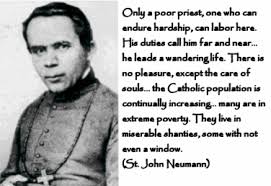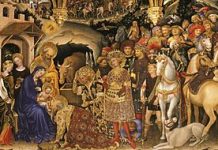In light of the upcoming parliamentary decision to be made concerning so-called ‘euthanasia laws’, we have decided to re-print over the next while a series of articles on the origins and philosophy of L’Arche, the community founded by Jean Vanier (the son of George Vanier, Governor-General of Canada from 1959-1967) to care for the disabled and marginalized, signifying that every life is worth living, with and for others. These articles are written by the physician and veteran Therese Vanier, the brother of Jean. (Editor)
I would like to tell you about how the L’Arche community began and spread over the world. In the 1960s my brother Jean was working on a doctorate in Paris with the intention of coming back to teach philosophy in Toronto. Through two friends, one a chaplain in a mental institution north of Paris and the other a psychiatrist, he began to meet a lot of people who were called mentally handicapped. He discovered these people had rare gifts for relating to other people, and he wondered why they had to live in a hospital. And he began to think again whether he should be teaching philosophy. . . . Reflecting on the Gospel he came to the conclusion that for him it wasn’t to be as much of a matter of teaching philosophy as living the philosophy he believed in. That is how it was; over a period of time, he decided not to teach philosophy, at least not in the conventional way. He moved into a house with some of the people from that institution. In 1964 this wasn’t too difficult; in France, at least, you didn’t have to have all kinds of amenities, and so it was a fairly primitive house. You may find it amusing that they didn’t even have an inside toilet.
And so he moved in with Philippe, Raphael, and Jacques, three men from the institution. It was an ordinary life: breakfast, do something in the morning, work in the garden, prepare lunch and supper, go to bed in the evening, and the day followed day. At first he thought that he was there to care for people. That’s important, looking after them; but he soon discovered something more important. If you are living with people it cannot just be a question of your caring for people. Once you’re living under the same roof you must share, and there are no two ways about it. Sharing means that each person is learning from the other. So it wasn’t just that he could do certain things that the handicapped man couldn’t: read, write, drive a car. He discovered that he was actually learning something from them. And what was it? That when your brain does not work as well as your heart does, you have gifts that other people keep under cover, gifts that have something to do with getting on with people because you must live at the level of the heart, not merely the level of the head.
After a few months, others—mainly young people, but some older as well—showed an interest in trying to live in this community with people who are called mentally handicapped. So in the French village of Trosly-Breuil other little houses opened, each trying to create Christian community. People sometimes came a long distance, from Canada and the United Sates. The second L’Arche community—Daybreak in Richmond Hill—was in Canada because Steve and Ann Newroth wanted the same kind of community to be available for mentally handicapped people in Canada. There are now some eighty communities around the world.
How does it happen? Does someone look at the map and say, “We’ll have a community here and another community there”? No, it is not like that at all. It goes on exactly in the same way as it did in the beginning, in that it depends on the people who want to do it. Let me tell you about how the first community started in India.
In the late 1960s a woman called Gabrielle, who had worked in France for some time, said that she would like to go to India to live in community there with the mentally handicapped. Some said, “That’s crazy! Why not go to the next village, or to Germany where you come from anyway?” But she felt called to India, a country she had previously lived in. So, with some help, she did go back to India. The people who welcomed her, and also my brother who went to help, were disciples of Gandhi who, as you know, was a great Hindu—a man of peace, a man of non-violence, but the point here is that he was a Hindu. It was Hindus who wanted to welcome this little group who had come to live with the mentally handicapped in community. The welcome from Hindus was a reminder that the people who would be coming would also be Hindu.
Gabrielle wondered how she would live in India. She came from the west, and some the helpers would be from the west too. Would they live western style or Indian? It wasn’t long before she decided that they would live Indian style. But before the first handicapped person came Gabrielle wanted a room in the house where she could be quiet and pray. She found one and put up her little cross, the sign of her Christianity and of her commitment.
The first mentally handicapped Indian who came brought all his belongings in a small bundle. The most precious of them was a statuette of an Indian goddess. Gabrielle, realizing what it meant to him, placed it in the room with the little cross, and that room became, and remains, the prayer room for the community. The second mentally handicapped man who came happened to be Christian, probably a Catholic because he brought with him a statue of Saint Anthony. So in the little chapel there was the cross, the Hindu goddess, and Saint Anthony; they seem to get on all right. What this means in practice is that people all very different—different colours, different abilities, different ages, different religions—were trying to discover the importance of other people. When you get right down to it, life is discovering how to live with other people, how to share with them. And so life has goes on in that community, as it does in the other communities in India.
Communities have started elsewhere in the world. The majority are in Canada, but people like to hear of things further afield, so I will tell you about the first community in West Africa, on the Ivory Coast. The group who wanted to start a community with mentally handicapped people of the Ivory Coast went with my brother to see the mayor of a town called Bouake because he owned a plot of land where they hoped to build a house. The mayor listened to them, and when I tell you what he said you have to remember that in Africa as everywhere else many people do not realize that somebody who is mentally handicapped is not mentally ill. The mayor didn’t know what these Europeans were about, and so after listening to them he said, “It is very interesting, but I don’t know why you want to come and live here with mad people.” My brother listened, thought, and then said, “Maybe we want to do it because we are a little bit mad ourselves.” The mayor then thought about this and said, “I see . . . well . . . yes.” It made sense to him that the assistants who wanted to live with mentally handicapped people were all a little bit mad, and he let them have the plot of land.
At the beginning I said that in that first year my brother learned something. Let me illustrate what he learned by a story about one of the men in that first community, who was really quite capable although after years spent in a big institution he found it difficult to be on his own. Gradually, however, he became quite independent, even to securing a job as a window-cleaner in a fairly big enterprise. One day there was a meeting of the board of directors, and they were in the boardroom, all around the table, all very serious, when there was a knock on the door. When he saw that there was a meeting on he said, “Good morning, gentlemen.” The men expected him to leave, but not at all. He walked in, closed the door, and, it being France, he went around the table saying, “Good morning, good morning, good morning” and shook everybody’s hand. Then he went off to the window and cleaned it. The board was left sitting there, watching, their breath taken away by what was a novel experience for them. When he was finished he said, “Good day gentlemen. Have a good meeting” and walked out. I trust his visit made that meeting a little more interesting. This is what someone who lives at the level of the heart and not at the level of the head is able to do. I wouldn’t have had the nerve, but in fact it may have been quite important for the board members to shake hands with somebody. Maybe the interruption made the rest of the meeting more comfortable.
So, what are these communities? What are we doing? We are living and working with people who are different from one another in capacity, age, marital status, colour, and religion. In our community in London would it surprise you to know that white, black and coloured people (of Indian stock)? It is not always easy for this mixture of people to live together, for it is a curious thing to live in this way. We live from day to day, learning from each other, and showing that it is important to discover each other’s gifts. It is important to be a community of people within a wider community, and to reach out to that larger community.
Doctor Thérèse Vanier, who died in 2014 at the age of ninety-one, was a member of one of Canada’s most distinguished families. Her father, Georges Vanier, served with distinction in the Foreign Service around the world. In 1959 he was appointed Governor General of Canada. Doctor Vanier, the eldest of five children, was educated mainly in England. She qualified in medicine at Cambridge University specializing in pediatrics and haematology. In 1972 she left the more conventional forms of medical practice in order to work with L’Arche, a project started by her brother Jean in 1964 to provide homes and workshops for mentally handicapped people. She founded the first L’Arche community in the United Kingdom near Canterbury. Later she founded another in London. She had also worked at Saint Christopher’s Hospice, which provides care and treatment for terminally ill persons. Toronto has had a L’Arche home—“Daybreak”—since 1969, located in Richmond Hill. It was there that Henri Nouwen lived in retirement until his death in 1996.










